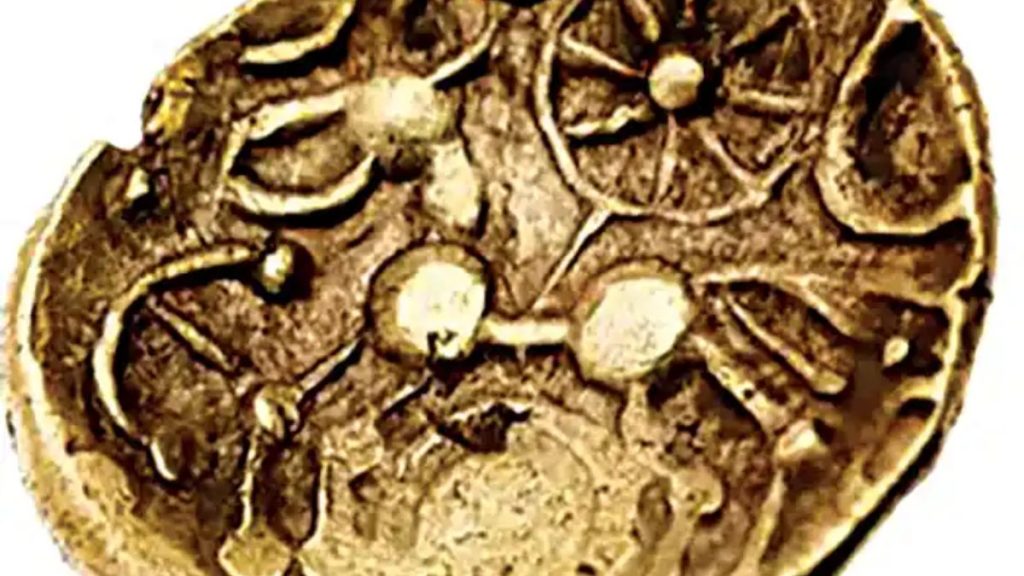The realm of ancient coins often sparks debate, not only among collectors but also in the fields of archaeology and cultural heritage. The recent discovery of a rare gold coin, linked to Esunertos, a king of Wessex who lived during the time of Julius Caesar, has ignited discussions on the exportation of cultural patrimony and the importance of preserving historical artifacts. This article explores the implications of this discovery, its historical significance, and the broader issues it raises regarding numismatics and cultural heritage.
The Discovery of the Esunertos Coin
This Article Includes
In 2023, a remarkable quarter stater coin was unearthed in Test Valley, Hampshire, which dates back to approximately 50 B.C. to 30 B.C. This ancient coin bears the legend “IISVNIRTOS,” translating to “Mighty as the God Esos.” Esos was a Celtic deity revered in both Britain and Gaul, indicating the cultural blend of the era. Archaeologists believe that Esunertos may have ruled from the nearby Danebury Hillfort, showcasing the coin’s potential significance in understanding the governance and cultural practices of ancient Britain.
Historical Context
The coin’s historical backdrop is intricately linked to the events of Julius Caesar’s attempts to conquer Britain in 55 B.C. and 54 B.C. It is a tangible connection to a period of significant political and cultural change. As Caesar was assassinated in 44 B.C., the Esunertos coin encapsulates a time of transition, with the emergence of local rulers alongside Roman influence.
Dr. John Sills, an archaeologist associated with the Ashmolean Museum’s Celtic Coin Index, noted that this coin is one of only three known coins featuring the name Esunertos. The limited number of coins suggests that Esunertos held a significant position within the socio-political landscape of his time.
Cultural Significance and Preservation Efforts
The British government has taken the unusual step of preventing the export of this rare coin, recognizing its national importance. Arts Minister Sir Chris Bryant emphasized the need for the coin to be studied and appreciated within the UK, stating, “As a rare object from our distant past, I hope a suitable UK buyer can be found.” The coin’s export license application has been deferred until October 13, 2024, allowing time for potential acquisition by public institutions.
This decision aligns with the broader goal of protecting cultural heritage and ensuring that significant artifacts remain accessible to the public for education and appreciation. It reflects an increasing awareness of the need to preserve historical objects, especially those that provide insights into a nation’s past.
The Potential Implications for Numismatics
While the decision to restrict the exportation of the Esunertos coin may be well-intentioned, it raises questions about the future of numismatics and the broader collectibles market. If a precedent is set that restricts the sale of rare coins to foreign buyers, it could potentially limit the ability of collectors to trade and sell their items. Such regulations could impact the dynamic nature of the numismatic market, where the value of coins often hinges on their rarity and demand.
Additionally, this situation draws attention to existing complexities regarding the importation and exportation of cultural artifacts, particularly in light of international agreements between countries. Collectors may face increasing scrutiny regarding which coins can be traded, leading to potential legal and logistical challenges.
Conclusion
The discovery of the Esunertos coin offers a fascinating glimpse into ancient Britain, illuminating the interplay between local rule and Roman influence. As the UK government takes steps to protect this culturally significant artifact, the conversation surrounding cultural patrimony and numismatics continues to evolve. Balancing the preservation of historical artifacts with the rights of collectors and the global marketplace will be crucial in navigating the future of numismatics. The Esunertos coin stands not only as a relic of the past but also as a catalyst for ongoing discussions about heritage, ownership, and the importance of safeguarding our shared history.
